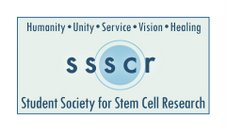Omaha World-Herald
November 27, 2007
Midlands Voices
Lab work interlinks adult cells, embryos
BY SANFORD GOODMAN
The writer, of Omaha, is a board member of Nebraskans for Research.
A recently reported dramatic breakthrough in cell research is a
triumph of human embryonic stem cell research.
Opponents of the latter who have rushed to claim this breakthrough
as vindication of their position ignore a crucial fact: It would have
been impossible if they had been successful in their efforts to crimi
nalize research on human embryonic stem cells.
They also overlook the same remaining challenges with these cells
that they have cited as reasons not to pursue human embryonic stem
cell research.
Two teams of scientists announced Nov. 20 that they successfully
reprogrammed fully developed human cells into cells with the same
characteristics as human embryonic stem cells — which can become any
of the different parts of the body during the course of fetal
development.
As has been reported widely, the study of human embryonic stem
cells has great promise to advance medical science and alleviate the
suffering of tens of millions of people. Such cells used in medical
research are currently derived from embryos that are deemed excess by
the parents who had them created at in vitro fertilization clinics
and are otherwise destined for destruction, which opponents object to
for religious reasons.
Without using embryos, the two teams created what they call induced
pluripotent cells by inserting four genes into the fully developed
cells, a process called direct reprogramming.
The Japanese team had published a paper in August 2006 reporting a
similar finding with mouse cells and found that the same genes worked
in humans. The University of Wisconsin team, led by James Thomson,
worked with human cells only and avoided certain genes based on
earlier research with human embryonic stem cells. Consequently, two
genes differed in each team's work and more study is needed.
In order to confirm that the resulting cells were equivalent to
human embryonic stem cells, the researchers compared them to those
cells' known characteristics — which themselves would still be
unknown if there had been no human embryonic stem cell lines to study.
But problems remain. The scientists used certain, potentially
harmful viruses to insert the genes into the reprogrammed cells.
Also, the Japanese work with mice derived from induced pluripotent
cells showed that reprogrammed adult cells have a marked tendency to
generate tumors. These factors must be overcome before these types of
cells can be used safely in humans — for example, to cure children
with juvenile diabetes.
Before a legislative hearing in early November, however, opponents
of human embryonic stem cell research cited analogous issues with
human embryonic stem cells as important reasons to abandon research
on them in favor of adult stem cell research and embryonic stem cell
research in animals.
They asserted that "animal embryonic stem cells provide a better,
easier, faster, cheaper and more scientifically powerful model for
research than human embryonic stem cells." This ignores that other
species' embryonic stem cells differ from their human counterparts in
important ways. Without comparison to human embryonic stem cells, we
would not have known this.
Above and beyond the creation of disease and patient specific cell
lines for study in the laboratory, the ultimate goal of reprogramming
research is to create replacement cells and organs for transplan
tation from a patient's own cells to avoid a subsequent lifetime
regimen of immunosuppres
Prior to this breakthrough, the most promising path to this goal
was somatic cell nuclear transfer, the same technique used to clone
Dolly the sheep.
Dolly's birth in 1997 demonstrated for the first time that
mammalian development was reversible. Unknown factors in the
cytoplasm of the egg cell reprogrammed the nucleus of a skin cell to
mimic a fertilized egg cell.
This changed the way James Thomson thought about developmental
biology. Ironically, it came at a time when he was becoming the first
person to derive human embryonic stem cells from excess embryos.
Direct reprogramming has always been the goal of human embryonic
stem cell research, and it looks now to be within reach much sooner
than expected. But as Thomson has noted, more study of the newly made
cells is required to ensure that the "cells do not differ from
embryonic stem cells in a clinically significant or unexpected way,
so it is hardly time to discontinue embryonic stem cell research."
Change settings via the Web (Yahoo! ID required)
Change settings via email: Switch delivery to Daily Digest | Switch format to Traditional
Visit Your Group | Yahoo! Groups Terms of Use | Unsubscribe
__,_._,___










